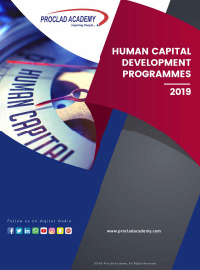Professional Business Writing Skills
| Ref No. | Dates | Venue | Fee (US$) | |
|---|---|---|---|---|
| MG 024 | 07 - 11 Jun 2020 | Dubai | 4500 | Register |
| MG 024 | 18 - 22 Oct 2020 | Dubai | 4500 | Register |
Professional Business Writing Skills
Introduction
Effective writing is often a critical success factor when it comes to presenting business cases in the workplace. An estimated 30% of all business communication are aimed at clarifying miscommunication generated from the other 70%! This realisation has resulted in business writing skills training becoming essential for capability development initiatives.
PROCLAD Academy’s Professional Business Writing training course will describe and apply structured business writing techniques designed to cater for the modern business environment. It is designed to provide participants with the ability to follow a process in writing documents. Above all, the course emphasises the use of simple, clear and positive language in addressing day-to-day business affairs.
The key features of PROCLAD Academy’s Professional Business Writing Skills training course are:
- Adopting a systematic approach to business writing that works for all documents
- Structuring effective writing & present high quality business cases
- Using an appropriate tone in writing that is suitable for professional audiences
- Applying the basic principles of good quality writing
Learning Objectives
Upon attendance to PROCLAD Academy’s Professional Business Writing Skills training course, the participants will gain:
- A clear understanding of how to plan and structure business writing in a professional manner
- Practice in building the introduction, the main body, and the conclusion of an effective business communication
- The ability to compile the writing in a logical sequence
- A guide to help recognise, and eliminate, common errors in business writing
- The ability to focus on the main purpose of the communication
- The skills to maintain clarity in preparing business communication
Target Audience
PROCLAD Academy’s Professional Business Writing Skills training course is intended for:
- Anyone who needs to create professional and effective written business communication
- Those who wish to significantly improve their written communication and express themselves effectively in writing
Training Methodology
PROCLAD Academy’s Professional Business Writing Skills training course will be an active course involving informal lecture, videos, exercises and discussion. Participants are encouraged to bring samples of their reports or other writing, which they can review against the principles explored in the course. During the course, participants will also work on an exercise to produce and edit business writing.
Course Outline
Introduction to Business Writing
- Course objectives & agenda
- Review examples of participants current written communication
- Q & A
The Nature and Range of Business Writing
- Differences between written and oral communication
- Differences between types of business writing
- Effective writing v/s efficient writing
Target Audience
- Identifying the aim of the business writing
- Analysing and understanding the target audience and the readers’ needs
Characteristics of Effective Writing
- Putting the reader first
- Types of communication – to provide information (informative), to make recommendations (persuasive)
- Setting and meeting objectives and terms of reference
- Length of writing and the use of appendices
- Layout and structure
- Developing and following a ‘house style’
Researching Information & Gathering Material
- Scheduling and deadlines
- Identifying your knowledge sources
- Organising and grouping your material
Selection Material and Structuring Communication
- Criteria of Relevance – what to leave out and what to put in
- Developing logical sequencing
- Using headings and sub-headings as signposts for the reader
- The role of introductions and conclusions
The Writing Process
- Concept and application of rapid composition
- Planning and drafting processes
- Developing keyboard skills
- Editing
- Getting the best from spell and grammar checks
- Proof reading
Document Design
- Standard templates
- Agree font style & size
- Use of BOLD and capital letters
- Headings & subheadings
- Consistent and correct use of display lists and bullet points
- Justifications
- Using and presenting tables
- Diagrams, figures and graphs
- Numbering
- Footnotes, endnotes and hyperlinks
- Addendums
How to Make your Writing More Persuasive
- The significance of persuasion
- Most persuasive words
Examples of Different Types of Written Documents
- Work Instructions
- Operating & Maintenance Procedures
- Manuals & Handbooks
- Questionnaires
Other Forms of Written Communication (Letters, E-mails & Minutes)
- Letter style, tone and structures
- E-mail style and purpose
- Meeting notes – purpose, structure and writing processes
Improve Readability
- Why is simplicity so important?
- Fog factor analysis and readability scores
- Sentence length and paragraph structure
- Dimensions of writing style
- Active v/s passive voice
- Improving language content and style
- Choosing your words
- Confusing pronouns
Punctuation and Grammar
- The language of grammar (a guide to grammatical terms and functions)
- Commas, full-stops, colons, semi-colons, dashes, brackets, etc.
- The apostrophe ‘s’
- Hyphenating words
- Consistency in using capital letters for proper nouns
Checking the Final Document
- Appendices & References
- Editing & Proof Reading
- Scheduling into the preparation
- Developing the skills of a proof reader
- Developing a systematic approach
Presenting the Document Verbally
- Selecting relevant information
- PowerPoint clarity rules
- Presentation skills
Course Review & Action Planning


